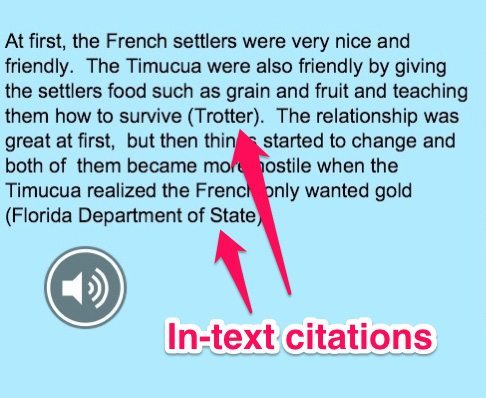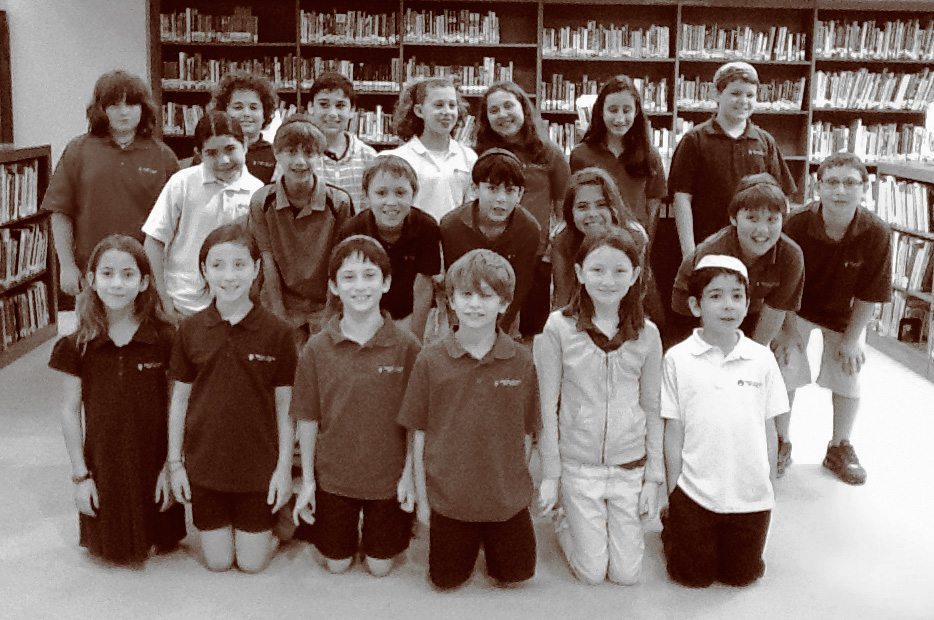Librarian Karin Hallett takes us through the step-by-step process her students went through to create history ebooks.
About the project
My 4th and 5th grade students finished creating ebooks on Fort Caroline, the first French settlement attempt in the New World, and the Lost Colony of Roanoke, respectively. Information sources were web-based, previously gathered, organized, and annotated using Diigo. Each student (5th grade) or student pair (4th grade) contributed a chapter to their class books.
Step 1. Brainstorming
Drawing on their subject knowledge, students began by brainstorming possible chapter topics and then putting them in an order.

Step 2. The writing process
Once topics were distributed, students began the pre-writing stage by selecting relevant websites, reading the information, and taking notes to organise their ideas.
Students used Google Docs and each shared their documents with the classroom teacher and me. This allowed us to provide immediate feedback. In addition, some students also chose to share their work with friends in the class, seeking their input as well.
 It was particularly important to provide feedback to students at this pre-writing stage as some found it difficult to narrow information to their particular topic or to simply stay focused on their section of the book to avoid overlapping with another section.
It was particularly important to provide feedback to students at this pre-writing stage as some found it difficult to narrow information to their particular topic or to simply stay focused on their section of the book to avoid overlapping with another section.
And we needed to make sure that facts were accurate. Since the writing process required several stages, including extracting relevant information from the sources, drafting, revising, and editing text, it took multiple sessions.
It was very important to me that students take ownership of this project. So, periodically, we checked our progress as a group. We read through all draft sections and checked facts, suggested word choice changes, provided syntax and grammar corrections, and incorporated transitions between the sections. Reading as a group had the added benefit of providing each student with a better idea on their classmates’ content.
Also, once drafts were complete, I provided each student/student pair with a checklist to ensure writing mechanics were in order. Checklists are a great form of self-assessment for the students that ensure learning and also provide them with a sense of project ownership.
Step 3. Images
Each section was to include at least one relevant image. This allowed me to teach a mini-lesson Creative Commons images and where and how to find them. For our history topics, we found Wikimedia Commons a great resource.
 Step 4. Information ethics
Step 4. Information ethics
Creating and publishing an ebook is a great tool to teach students digital citizenship. For this project, I introduced an adapted version of the MLA citation style. Students learned to create proper citations for both text and images. Their sections include in-text citations.
Step 5. Product
Students used Book Creator to create their books. Before importing text and images, students checked each other’s work one last time. For this purpose, I provided them with a final check sheet. Fifth grade students also compiled a glossary and editors were asked to identify words/phrases to include in the glossary during the final check.

The last step was to decide on a format for the ebooks. Each class brainstormed several options for font style, colour and size as well as background colour. Each also co-designed the book covers and wrote group reflections.
Once their sections were finalised, they sent them to me via email as iBooks. I combined the books into one and added the Table of Contents, Works Cited, Image Credits, and, in the case of 5th grade’s book, the Glossary pages. The final products are multi-modal, including text, audio, images, and hyperlinks.
Step 6. Assessment
The classroom teacher and I informally assessed both the process and the quality of work through observation and reading of all documents at each drafting stage. If we felt we had to take a step back to bring the group together, we did take the time.
For example, after reading all drafts, we realised that there was some repetition of information between different book sections. To ensure the students own this project, we then read all drafts as a class to identify repetitive information. We also continually provided feedback on all written work. Most students received comments/suggestions from both of us.
Reflection
For both my colleague, Shelly, and I this project was meant to not only deepen our students’ understanding of the time periods and historical events they researched by engaging them in the publication of a book, but from the beginning we wanted this to be a student-centered/student-owned project. Creating and publishing ebooks is a very involved process, but it is worth the time spent planning and then guiding the students.

This project promoted the development of multiple literacies. Students learned so many skills, from writing (organisation, word choice, sentence fluency, transitions, and mechanics) to editing/proofreading to finding Creative Commons images to citing sources to collaborating to fluently transition between multiple apps (Google Drive, browser, Book Creator) to publishing.
Should you decide to hop on the ebook publishing train with your students, remember to be flexible and to allow time. Each stage of the project evolved slowly in accord with their own unique tasks–research, writing, publishing. Slow but deliberate work is key. In retrospect, the project was more about the process than the end product, not only for the teachers but the students as well.
Karin Schreier Hallett has been a librarian for 15 years, most recently as School Librarian and Instructional Coach at the Martin J. Gottlieb Day School in Jacksonville, Florida.
Karin is a Book Creator Ambassador.









2 Comments on “Creating and publishing a collaborative ebook”
Hi, thanks for this post, I’m looking into how to do this with my class. One question: students created their parts on google docs, but how did you import these as ibooks and then to book creator?
If they created some text in Google Docs you won’t be able to import that as is. You’d need to copy and paste the text. The only file that can be imported into Book Creator is an ePub file that was originally created with Book Creator.